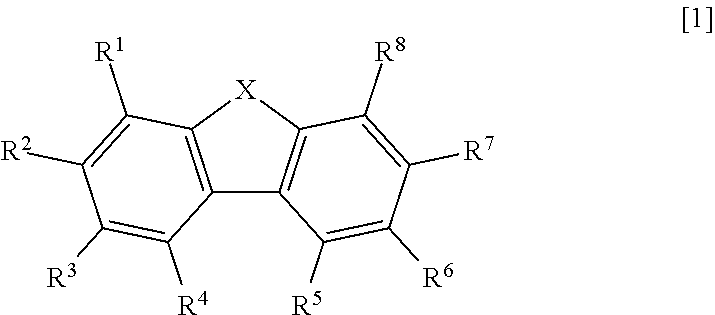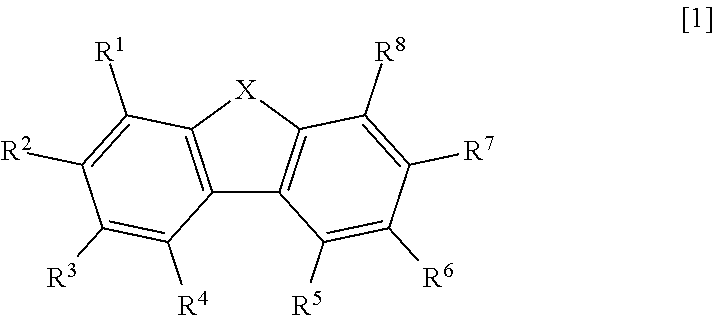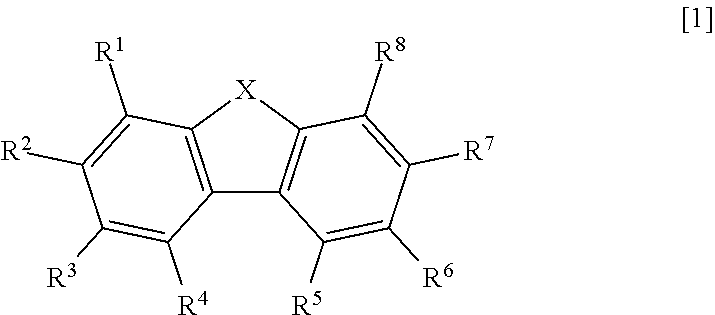Toner
a technology of toner and fixing member, applied in the field of toner, can solve the problems of low-temperature fixability or charging performance, thereby contaminating the fixing member, not being obtained, etc., and achieve the effect of reducing the fixation temperature of toner, low melting point, and reducing the amount of charging
- Summary
- Abstract
- Description
- Claims
- Application Information
AI Technical Summary
Benefits of technology
Problems solved by technology
Method used
Image
Examples
examples
[0200]The basic constitution and features of the invention of the present application are described in the preceding, while the invention of the present application is specifically described in the following based on examples. However, the invention of the present application is in no way limited to these. Unless specifically indicated otherwise, parts and % are on a mass basis.
Binder Resin 1 Production Example
[0201]
propylene oxide adduct on bisphenol A117 parts(average number of moles of addition: 2.2 mol)ethylene oxide adduct on bisphenol A 62 parts(average number of moles of addition: 2.2 mol)isophthalic acid390 partsn-dodecenylsuccinic acid360 partstrimellitic anhydride 19 parts
[0202]2 parts of dibutyltin oxide per 100 parts of the total acid component was added to the indicated monomer, and a binder resin 1 was obtained by reacting for 6 hours at 220° C. under a nitrogen current while stirring. The softening point was 135° C. and Tg was 65° C.
Binder Resin 2 Production Example
[0...
example a-1
Toner A-1 Production Example
[0205]
binder resin 1100 parts compound represented by general formula [1]3 parts(9-fluorenone, melting point: 84° C.)C.I. Pigment Blue 15:34 partsaluminum 3,5-di-tert-butylsalicylate compound0.5 parts
[0206]These materials were pre-mixed using a Henschel mixer and were then melt-kneaded using a twin-screw kneader extruder.
[0207]The obtained kneaded material was cooled and then coarsely pulverized with a hammer mill and subsequently pulverized with a jet mill; the resulting finely pulverized powder was classified using a multi-grade classifier based on the Coanda effect to obtain a toner particle having a negative tribocharging behavior and a weight-average particle diameter (D4) of 6.8 μm. 1.0 part of a hydrophobic silica fine powder (specific surface area by nitrogen adsorption measured by the BET method=140 m2 / g) and 3.0 parts of strontium titanate (volume-average particle diameter=1.6 μm) were externally added and mixed with 100 parts of this toner pa...
examples a-2
to A-20
[0235]Developers A-2 to A-20 were evaluated using the same methods as in Example 1. The results of these evaluations are given in Table 2.
[0236]
TABLE 2fixing low-memberhalftone temper-reflection ExampleDevelopercontami-non-aturedensityNo.No.nationuniformityfixabilityNNHHLLA-1 A-1 AAA1.481.471.48A-2 A-2 AAA1.481.471.48A-3 A-3 AAA1.481.471.48A-4 A-4 AAB1.481.471.48A-5 A-5 AAB1.481.471.48A-6 A-6 AAB1.481.471.48A-7 A-7 AAB1.481.471.48A-8 A-8 AAB1.481.471.48A-9 A-9 AAB1.481.471.48A-10A-10AAB1.481.471.48A-11A-11AAB1.481.471.48A-12A-12AAB1.481.471.48A-13A-13AAB1.481.471.48A-14A-14AAB1.481.471.48A-15A-15AAB1.481.471.48A-16A-16BAB1.481.451.48A-17A-17BAB1.481.451.48A-18A-18BBC1.461.451.46A-19A-19CBC1.461.451.46A-20A-20CCC1.461.451.46
[0237]In table 2, NN indicates “normal temperature, normal humidity”, HH indicates “high temperature, high humidity” and LL indicates “low temperature, low humidity”.
Developer A-21 to A-27 Production Example
[0238]Toners A-21 to A-27 were obtained proceeding...
PUM
| Property | Measurement | Unit |
|---|---|---|
| boiling point | aaaaa | aaaaa |
| melting point | aaaaa | aaaaa |
| melting point | aaaaa | aaaaa |
Abstract
Description
Claims
Application Information
 Login to View More
Login to View More - R&D
- Intellectual Property
- Life Sciences
- Materials
- Tech Scout
- Unparalleled Data Quality
- Higher Quality Content
- 60% Fewer Hallucinations
Browse by: Latest US Patents, China's latest patents, Technical Efficacy Thesaurus, Application Domain, Technology Topic, Popular Technical Reports.
© 2025 PatSnap. All rights reserved.Legal|Privacy policy|Modern Slavery Act Transparency Statement|Sitemap|About US| Contact US: help@patsnap.com



